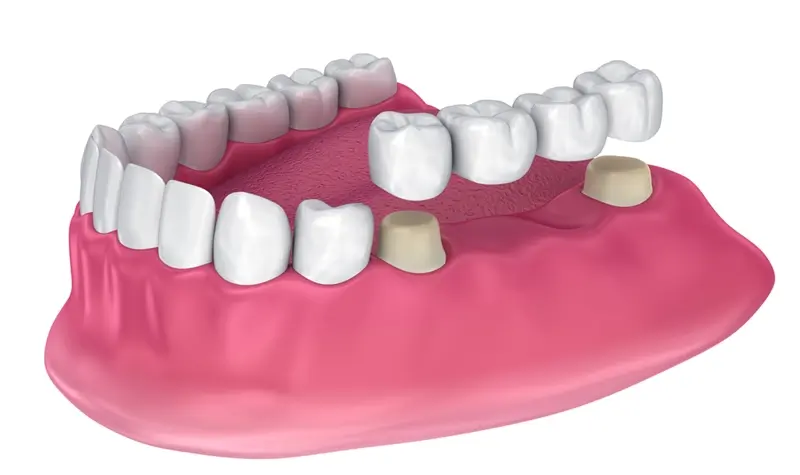The dental bridge procedure, uses dental crowns over the neighbouring teeth to hold the new, false tooth, in place. A tooth may need replacing for various reasons and it is down to the dentist to decide the best course of action. Other options could include dentures or dental implants – which are similar to a screw and affix the tooth into the gum or jaw.
Why replace a tooth at all?
A gap in the teeth may be replaced purely for cosmetic purposes, but there a number of health reasons for the procedure too. A long-term gap may cause changes in chewing, allow existing teeth to grow out of line, and can affect a person's speech. There is also a risk that small food particles will get lodged and cause bacterial growth, which is associated with other health problems such as halitosis and tooth decay.
How is a dental bridge fitted?
A laboratory will make a made-to-measure bridge that will also be colour-matched to the patient.
The teeth either side of the missing tooth will be filed down when the bridge is ready to be fitted. The dentist will take a mould of the patient's teeth and a laboratory will make a made-to-measure bridge that will be colour-matched. Most commonly, a bridge is made from porcelain, but it can be formed of gold, alloy, or a combination of the two. A temporary bridge may be fitted while the fixed bridge is made.
The dental crowns will be placed over the top of the filed teeth, with the false tooth sitting in the gap. The new tooth and the crowns form the full dental bridge, which will be securely attached to the teeth either side to prevent any movement. This may be adjusted once the patient has checked the fit.

If there is not a healthy tooth available to attach to on one side, a cantilever bridge may be used, which joins to one tooth only.
For more information about dental bridges and your suitability for the procedure, don't hesitate to contact our friendly team. Schedule an appointment online or call City Dentists on 04 978 4964.
